Text
Clonmacnoise- County Offaly
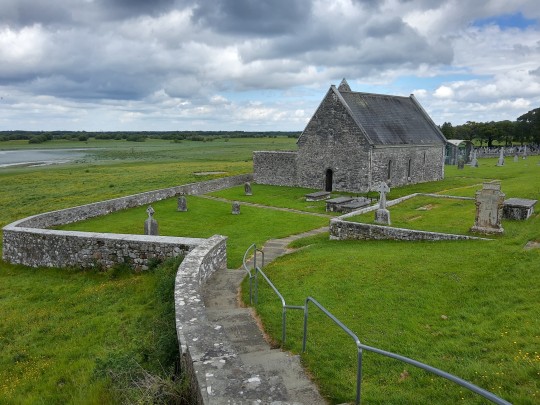
Clonmacnoise is a monastic site right on the bank of the river Shannon.
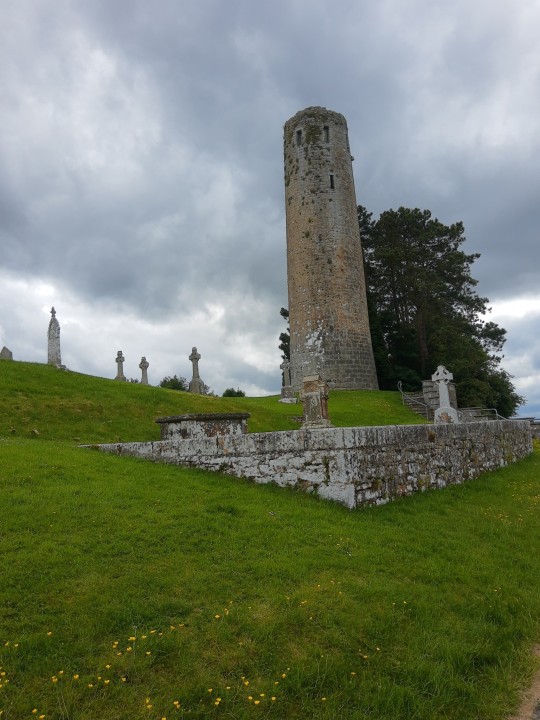
Founded by St. Ciarán in the 6th century, it grew into a flourishing monastery. It became a well know place of learning with students traveling from all over Europe to study there.

There are an amazing 7 churches, 2 round towers, 3 Celtic crosses, a ruined cathedral as well as grave stones covering the area.

I went there with my family and as we are still in a pandemic the area was all marked out in a one way system and the visitors center was unfortunately closed.
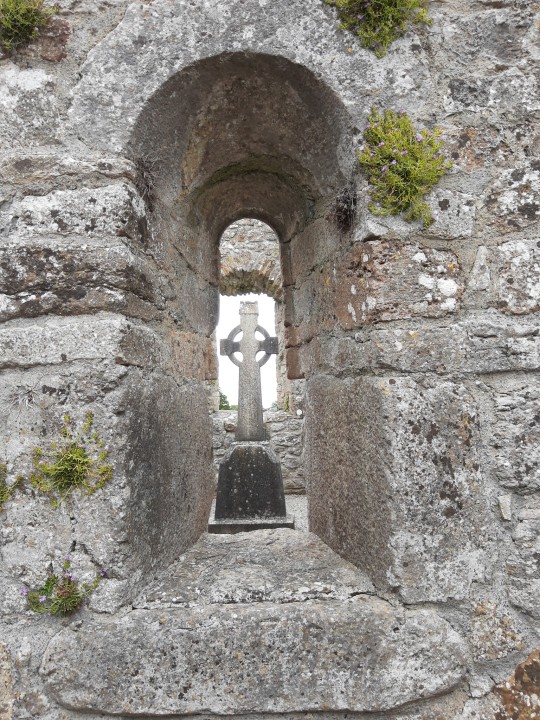
Due to the visitors center being closed it meant I did not get to see the original Celtic crosses and grave slabs that were held in the building. There are however replica ones outside so I did get to see them.


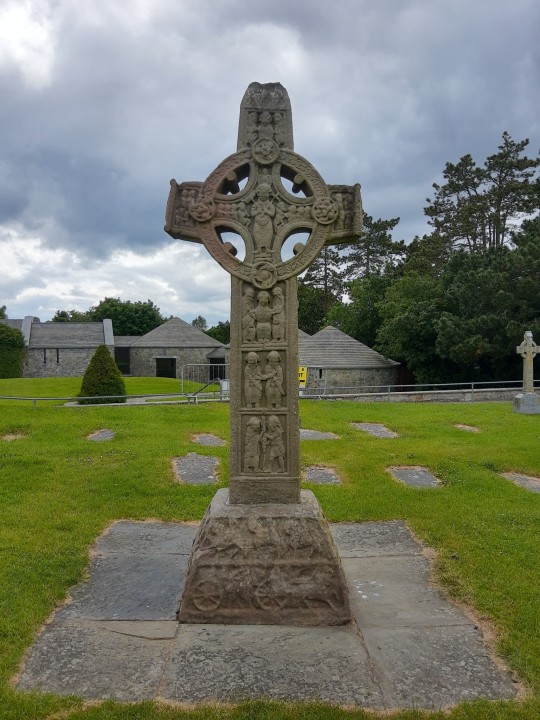
There is also a small cafe and tourist shop there, and it is accessible for those in wheelchairs. It is self guided as well.

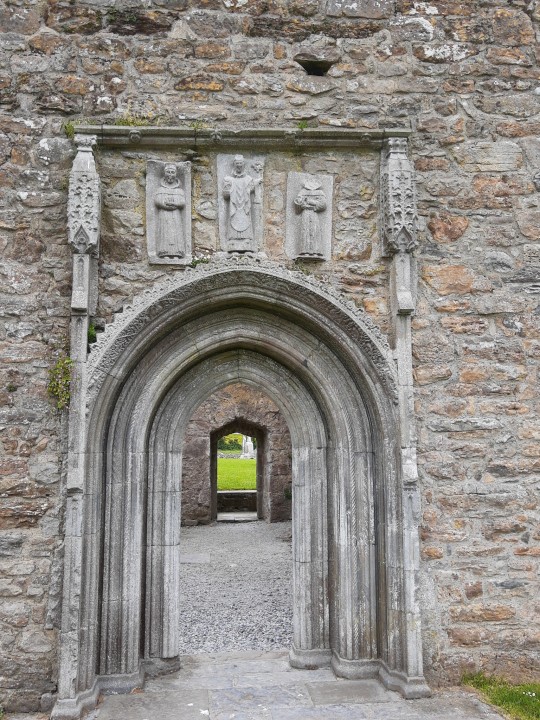
Clonmacnoise is run by the OPW , due to covid-19 they have kindly opened all OPW sites for free this year. Meaning this site and many others are free to visit.
6 notes
·
View notes
Text
Found this amazing photo of my grandparents. Both of them looking great back in the late 1940s maybe early 50s. My grandma was born in 1934 and she only seems to be around 20 something here.

8 notes
·
View notes
Text
Blarney Castle

Blarney Castle is a well known tourist spot in Co. Cork, Ireland. It’s probably due to the famous Blarney Stone. This stone, the legendary stone of eloquence, is said to give you the gift of the gab, or in other words, you will never again be lost for words again. How do you get this helpful bit of magic? All you must do is climb to the top of the castle, bend backward over a large opening, and kiss the Blarney stone. I never said it was easy.

The first building on this plot of land was a wooden structure, built in the 10th century AD. It was replaced by a stone building in 1210 AD, the entrance of which stood a massive 20ft above ground level. It wasn't until 1446 that the third castle was built, this is the building we see today. This castle was build by Dermot McCarthy, King of Munster.

In 1646, during the Irish Confederate Wars, the castle was seized by the Parliamentarian forces. However during the Restoration period,1660s, the castle was restored by Donough MacCarthy the 1st Early of Clancarty.
In 1690s the 4th Earl of Clancarty was captured during the Williamite wars, his lands and castle were confiscated by the Williamites.
The castle went on to be sold and change ownership several time after this. Finally being purchased by Sir James St John Jefferyes, governor of Cork City. Members of the Jefferyes family built a mansion close to the keep. This mansion was burnt down in a fire and later replaced by a Scottish Baronial-style mansion in 1874. This house became known as Blarney house.
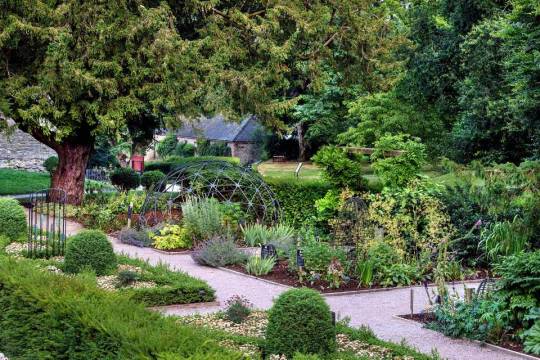
The gardens at Blarney castle is a wonderful 60 acre piece of land. Filled with amazingly diverse areas. You can journey through tranquil scenery to mystical, magical places.
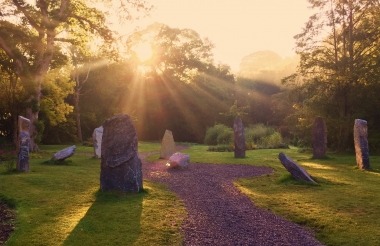
The large parklands include gardens, avenues, arboretums and waterways. The one thing to definitely keep a close eye out for is the poison garden, one of the very few in Ireland.

This garden, kept hidden in the battlements of the castle, is like something you would expect to see in Hogwarts. There are plants so dangerous and toxic, they have to be kept in cages. The difference in the colour of this harsh and deadly garden, compared to the green and colour filled parklands is astounding.
It contains a collection of poisonous plants from all over the world including Wolfsbane, Mandrake, Ricin, Opium and Cannabis. Many labelled with information about toxicity and both their traditional and modern uses. Many plants were once used as herbal remedies, though, we now know are extremely toxic.
I visited this place around 4 years ago on a weekend trip to Cork. It was an extremely interesting and beautiful place to visit. It is definitely on my list to visit again. It has long garden walks around the 60 acre scenic parklands as well as the castle and a small shop. Close by are cafes and restaurants you can eat at. You can not visit Cork without going to see Blarney Castle and the Blarney Stone. I recommend going here if you ever decide to visit Ireland.
#Ireland#cork#blarney castle#blarney stone#irish history#irish heritage#Irish tourist#tourist#Tourism#tourists#travel#history#county cork#castle#garden#poison garden
6 notes
·
View notes
Text
Johnstown castle and garden's, inside the museum
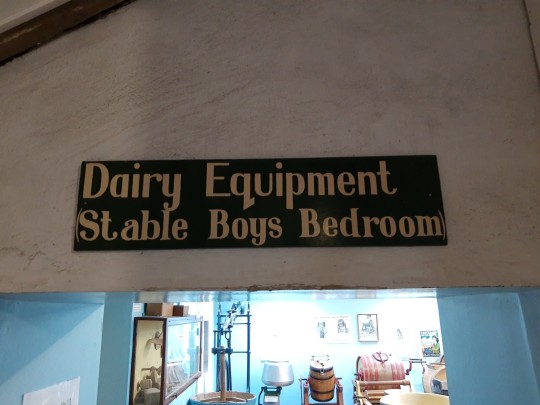
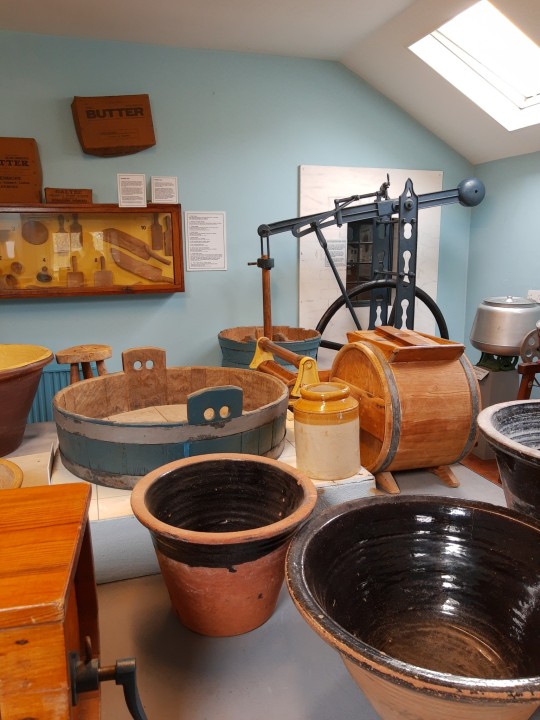



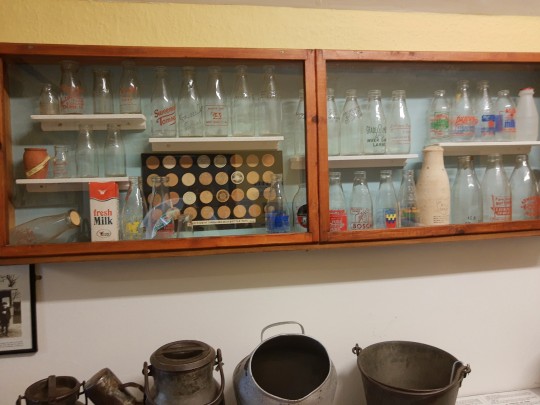
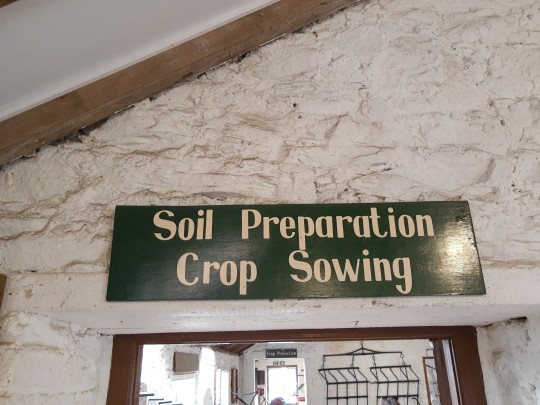
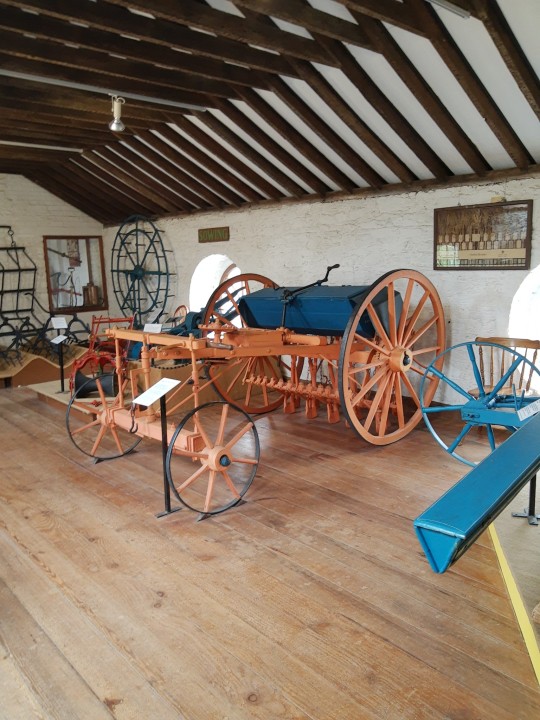
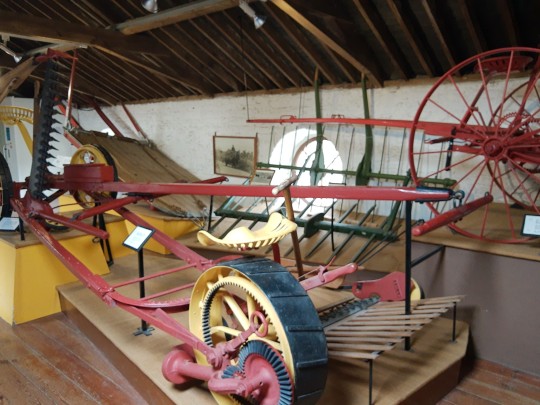

Part 3, dairy and crops
0 notes
Text
Johnstown castle and garden's, inside the museum
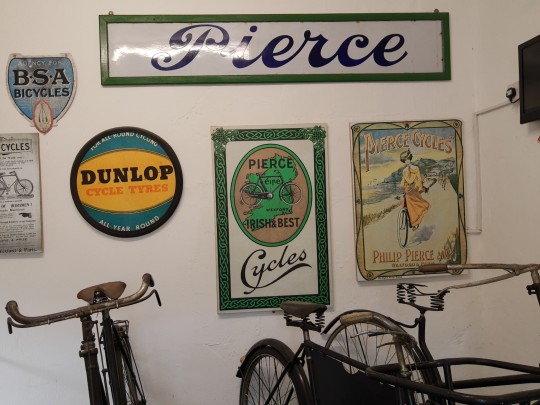
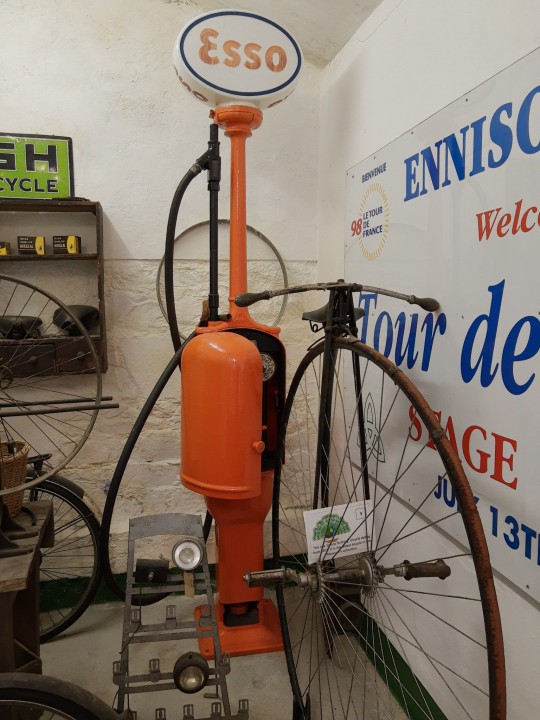

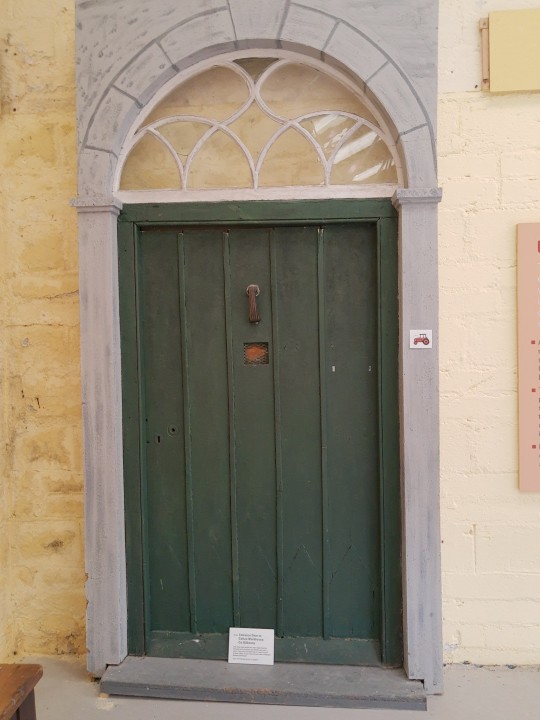
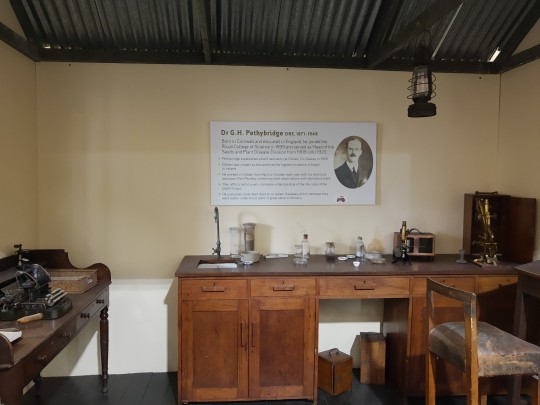





Part 2, farming and business.
0 notes
Text
Johnstown castle and garden's, inside the museum.
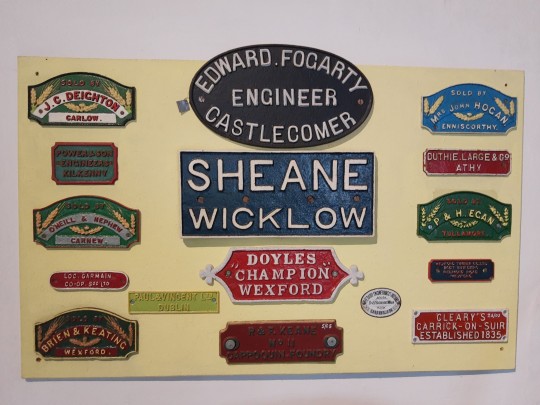


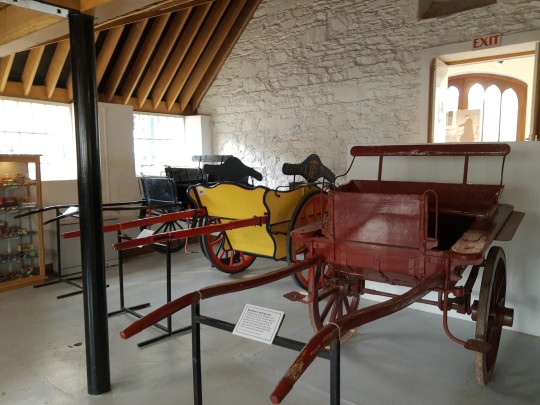


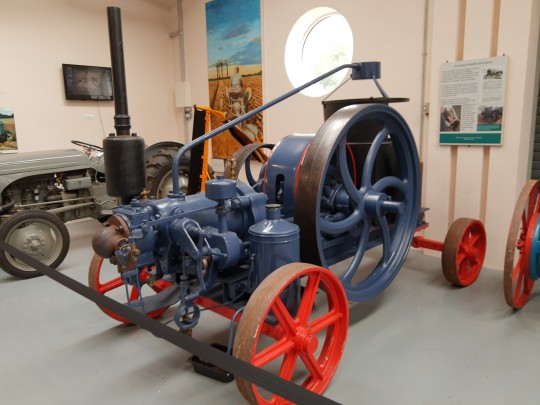



Part 1, travel and farming.
#irish tourist#irish#Ireland#irish history#irish heritage#tourist#tourism#castle#garden#farming#farmers
9 notes
·
View notes
Text
Johnstown castle and garden's.
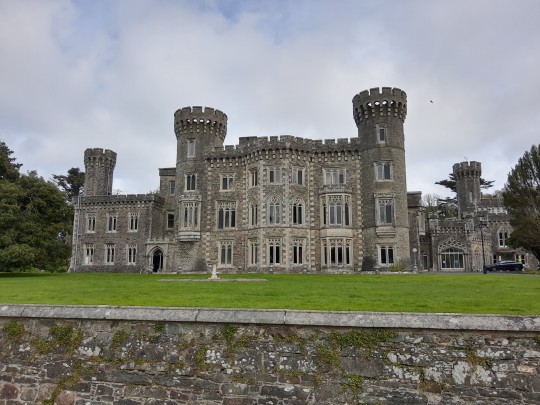

This historical place should definitely be put on your list of things to do in Ireland.
Johnstown castle is build in county Wexford, this county was named by the Norman's who called it weisfiord or veisafjpror meaning bay or inlet of the mudflats, these names over time became what we know them as now, Wexford.
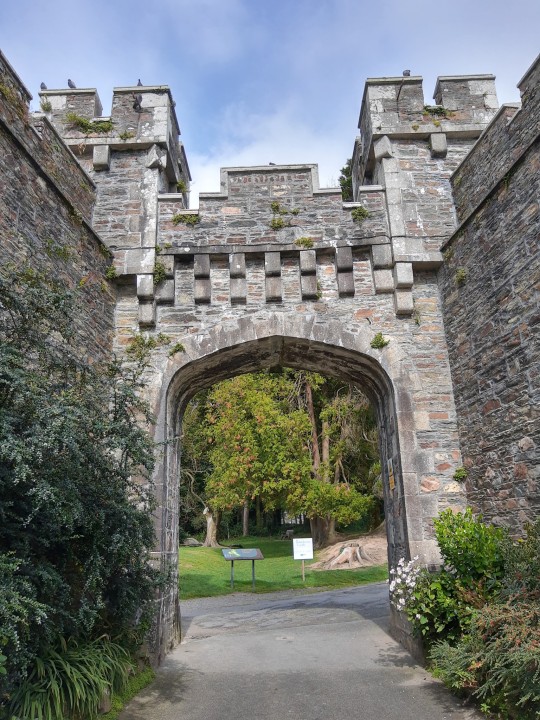
The first castle on this land is from 1169 and was built by the Esmonde family.
During the 1640s, the time of Cromwell, the castle and land were confiscated. From then till 1692 the castle changed hands several times before finally being passed to the Grogan family.
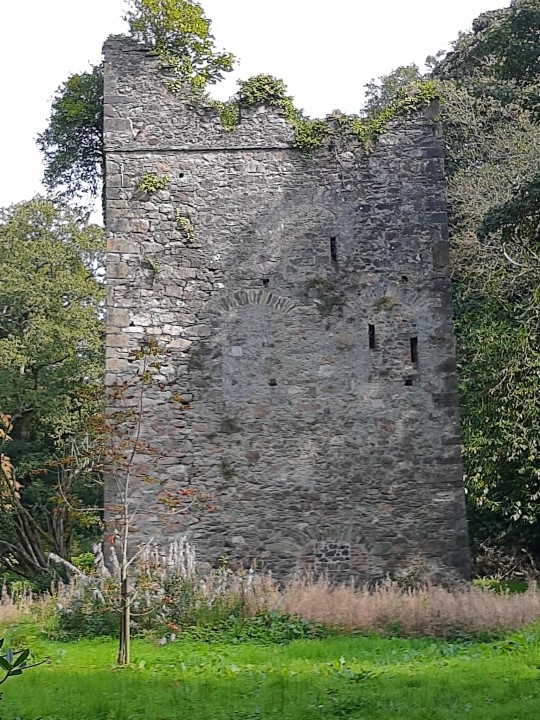
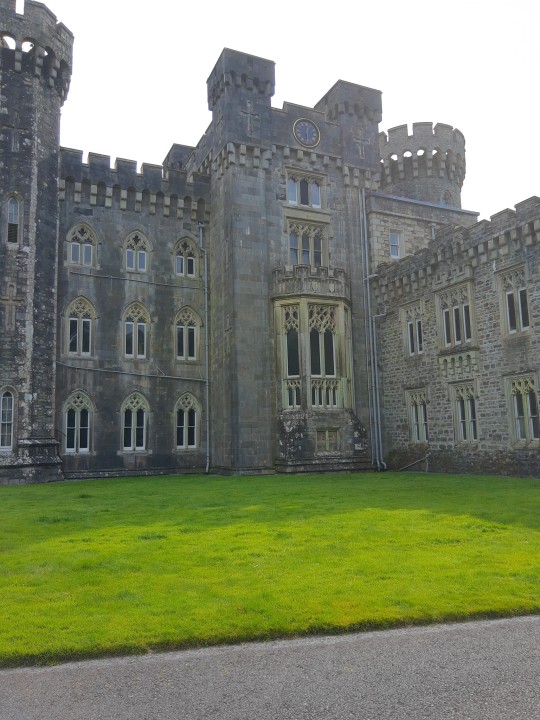
The Grogan family proceeded to develop the castle, grounds and overall estate into what is there today. The families descents lived there up until 1945, when they handed the property over as a gift to the Irish nation.

The castle was amazing to see from the outside, unfortunately there were no spaces left for the guided tour. However we were still able to see the whole garden, walk around the lakes and see the museum.
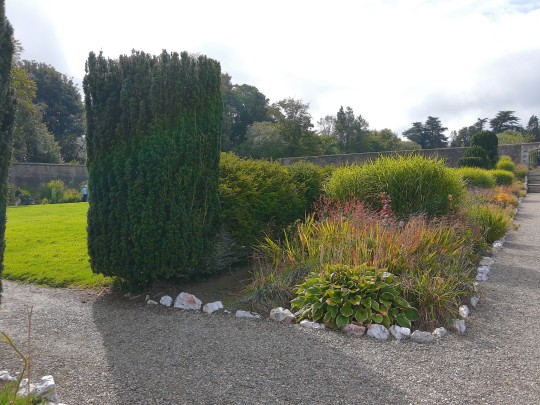
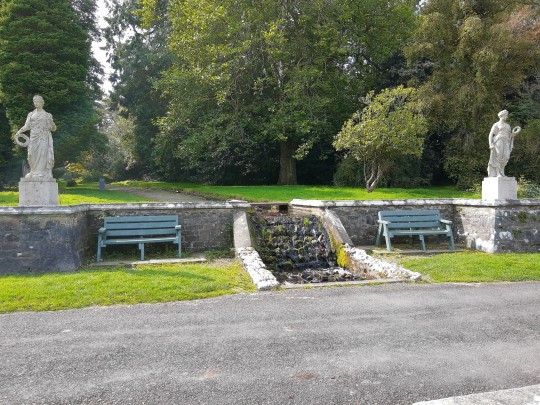

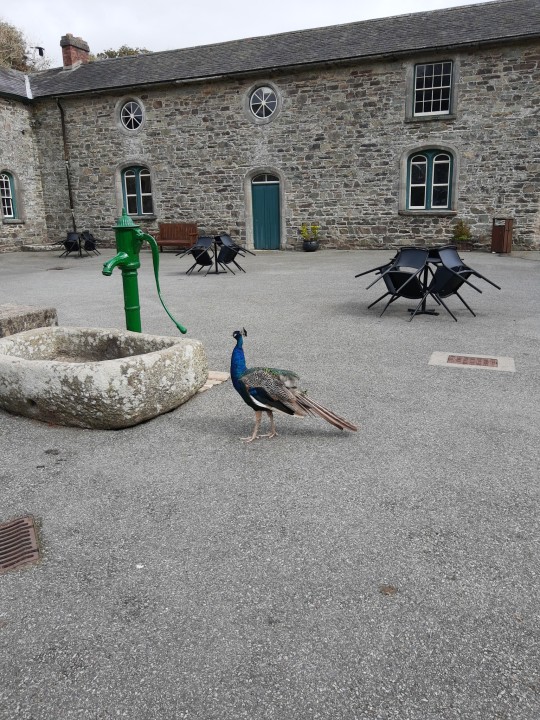
There is a little shop on the way out, filled with things from food and drink to blankets and scarves, all that were made in Wexford. There is also a cafe/restaurant for you to eat at.
I will continue in another post all about the museum.
#ireland#irish heritage#irish history#tourism#tourist#history#travel#wexford#castle#garden#lake#peacock
4 notes
·
View notes
Text
I had a lovely day out today, I travelled all the way down to county Wexford. I say all the way down as if it was a extremely long journey, it was only an hour and half, two hours max.
We drove a more scenic route on the way there, we wanted to take in the countryside and see if there were any hidden gems that you can't really find on the internet.
While there wasn't much, we did find some. There were also some lovely towns and villages as well.
About half way through our journey we saw one of those brown signs that can lead you to some great place, we couldn't believe what it said.

Nobody in the car even knew that walt disney's family had originated from Ireland. It was news to us.
We drove down the small, bending road, looking for this place. When we finally found it, we were actually shocked, now my family is not religious so please don't misunderstand me when I say this, the place was an utter disgrace. The graveyard was overgrown and most of the headstones were ruined, either completely broken or fallen over.
We found it, and still do, extremely disrespectful that the burial place of so many people was just left to fall into ruin. What made it even worse though, was that they put up the brown signs, that direct you towards something of interest whether it be historical, educational, leisure etc. I could not believe they were directing people to see people's graves and didn't even have the decency to look after them.

This is the entrance to the graveyard, the one in which walt disney's ancestors are buried, along with others.
I can find pictures online of the headstones, but I never had the intention of posting that kind of picture here anyway even if I had found the grave, so I won't post any from google here either.
I will post about the rest of my day over a couple of other post's, it was a very enjoyable day if you exclude this.
4 notes
·
View notes
Text
Emo Court.

Went for a walk around the lovely Emo Court today. The name Emo, comes from the Gaelic word Ioma, meaning bed or resting-place.
It is in county laois, in the village of Emo. It is a large neo-classical stately home.

Work started in 1790, but was not finished until 1860. It was designed by architect James Gandon, who designed other buildings such as the customs house in Dublin. He designed it for the Earl of Portarlington.

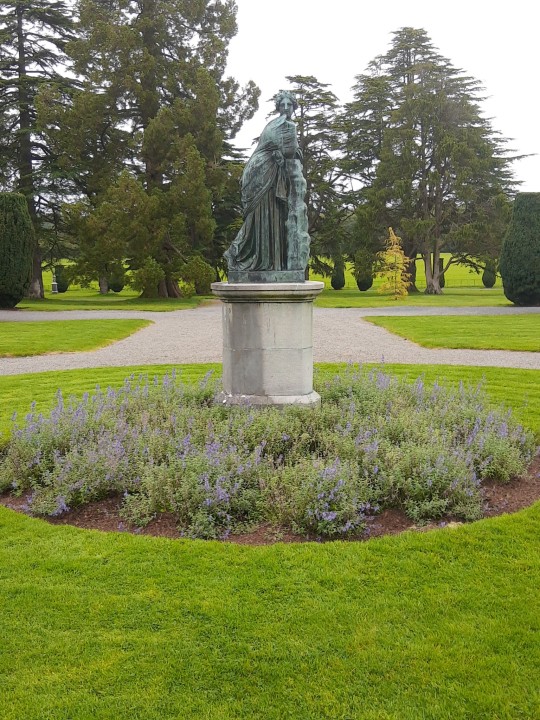
It passed through several hands throughout the late 19th century all the way to the early 20th century. It was finally passed over to the government in the 1990s. It is now managed by the OPW (office of public works) and is open to the public.

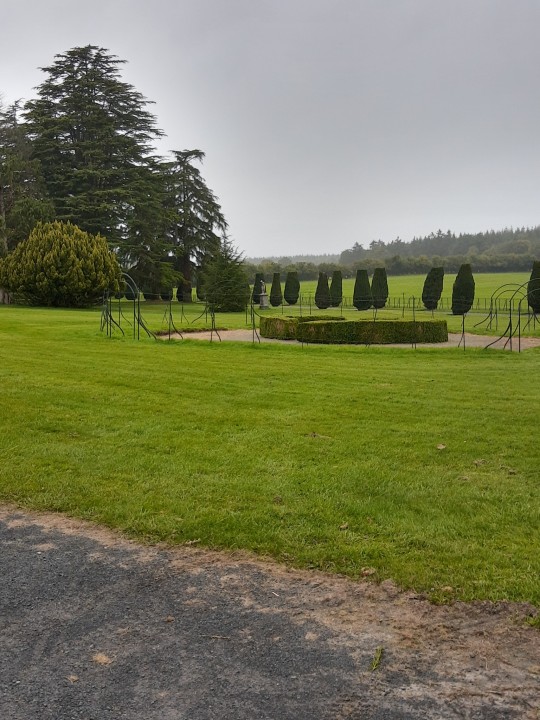
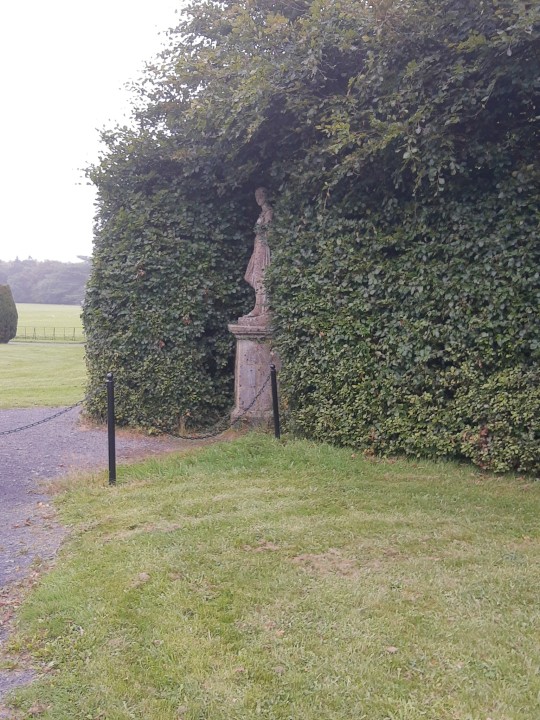
The gardens are free to wonder around and see the birds on the lake. There is a cafe that serves hot and cold food, mostly light food but all tasty. The cakes are amazing. The house it's self is open only in the summer time, and you may only see around the ground floor. All for the a small price though.



0 notes
Text
Leap castle

Leap castle pronounced lep, has a bloody and turbulent history.
Located in Coolderry, county Offaly near the town of Roscrea.
It is thought to have been built in 1250AD, but accounts of exact date is unknown.
It was built by the O'Bannon clan, who were secondary chieftans to the O'carroll clan.
According to records in 1513, the Earl of Kildare attempted to seize the castle. Three years later he attacked the castle again, partially demolishing it. In 1557 the O'carroll clan were able to regain possession.
However since 1532, massive family struggles had played the O'carroll clan. When the castle was in there possession it only grew worse. Brother turned against brother, all for leadership of the clan.
When one brother, a priest, was holding mass in the castle for the family, his rival brother burst into the chapel. The rival brother brought forth a sword, butchering the priest. He fell across the alter and died in front of his family. This room is now known as the bloody chapel

In 1659 the house was passed by marriage to the darby family, the wife of the owner held séances and that helped to gain publicity towards the castle being haunted.
Many renovations and expansions were also done at this time, die to this though, the land around the castle ended up being sold.
Later in 1922 the castle was burned during the civil war and was no longer livable.
In 1974 the ruined castle was bought by an australian an historian, he spent the rest of his life renovating the castle.
In 1991 the castle was bought by it's present owners who live there, but also open it for tours and continue to renovate it.

In the early 1900s during some renovations, an oubliette was discovered. Inside they found human bones. It took three cartloads to remove all of the bones.
There are many tales of hauntings, of a red lady holding a dagger to an elemental spirit smelling of decay. There are even stories of two children running up stairs calling out each other's name.
The castle has been visited by most haunted, TAPS from ghost hunters and ghost adventures. All recording interesting things.

I have visited this castle twice, the first time I visited, two other visiters caught some interesting things that I was shown by them. Unfortunately though as they were not with me I don't have access to those pictures now. One picture was an image of a face by the large fire place in the entrance hall, the other a ball of light going up the dark windowless stairs.
You can visit that castle and come up with your own opinion on if you believe it is haunted or not.
Tell me what you think if you have been there. Is it haunted ?
#haunted#ghost#ghost and hauntings#ghost adventures#most haunted#castle#ireland#irish heritage#irish history#tourist#tourism
4 notes
·
View notes
Text
Reposting from my personal blog
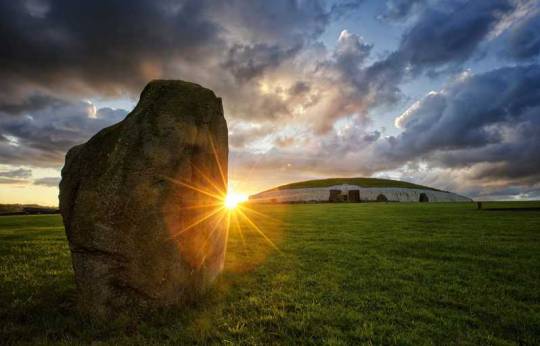



Newgrange -County Meath, Ireland.
Newgrange is one of the large stone passage tombs located at the Brú na Bóinne heritage site.
It was built around c.3,200BC and making it around 600 years older then the pyramids of Giza and 1000 years older then Stonehenge in England.
Brú na Bóinne has two other site called knowth and dowth and the whole area is a designated world heritage site by UNESCO.
Megalithic art is seen all over Newgrange. Archeologist's categorize the motifs decorating the stone . They are separated into categories of circles, spirals, arcs, chevron's, stars, parallel line, off set it comb-devices, lozenges, serpentiforms and dots in circles.
One of the most famous designs from newgrange is the spiral, specifically the triple spiral. Many know this as the triskelion, in ancient Celtic culture it is called the triskele. You can see the triskele clearly on the large stone I front of the entrance in the fourth picture.
Newgrange is best known for its illumination during the winter solstice. Due to what is know a a roof box, on the morning of the winter solstice the light shines through the roof box, down the 19 meter long narrow passage and into the end chamber. It fills the chamber that is usually dark with the amazing sunlight and what you see is breathtaking.
During my visit there I couldn't go on the winter solstice as due to the small space only a very limited amount of people can go and so it is done by a lottery each year. I could however see a recreation of what the winter solstice is like and although it isn't exactly what you would see it was still amazing.
The tour guide told up of the few times he was able to be the guide in the day if the winter solstice and what it was like and the first thing he said was that it was magical. He said some about the type of stone and the art carved into them meant the when the light hit them it looked as if the spirals were swirling around.
It's no surprise that there are a large number of myths and Celtic tales related to Newgrange. Tales of Celtic gods and goddesses and chieftains and their families. They go on for ever.
If you decide to visit Ireland I recommend going to the Brú na Bóinne heritage site
I will be doing this for as long as I feel like doing it. I will be doing any kind of historical place in Ireland with a bit of information and some pictures.
129 notes
·
View notes
Text
Reposting from my personal blog
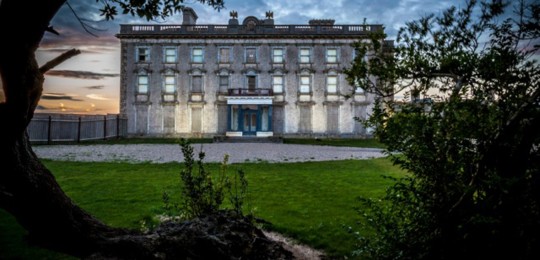




Loftus Hall - Co. Wexford
Loftus Hall is well known in Ireland, especially among those who like to read hair-raising tales and gruesome deaths.
Many call Loftus Hall the most haunted house in Ireland. It's tales of death's and hauntings all start from when it was built.
It all begins around 1170 AD when Raymond Fitzgerald landed in Hook Peninsula, Co. Wexford. He, along with a small group of Norman's helped to enforce Norman rule over Ireland. He build a castle in the spot of Loftus Hall but it fell into disrepair in 1350. His descendants build a new castle called 'The Hall' . It stayed with in that family until the mid-1600. That was when the Irish Confederate war broke out. The castle was repeatedly attacked untill it was eventually confiscated under cromwellian confiscation rule. It was put up for auction and in 1666 Henry Loftus bought it and renamed it Loftus Hall.
Henry Loftus rebuilt the hall and no money was spared. Amazing mosaic floors and hand carved grand stair cases the place was fit for a queen, unfortunately though she never visited.
The first and most shocking thing happened in the mid-1600. The son in law, Charles had married Henry's daughter Anne and they had six children. Two girls Anne and Elizabeth. Henry's daughter, Charles' wife died when the two daughters were still young and so Charles remarried to his cousin Jane. They live together with his daughter Anne in Loftus Hall.
One night there was a awful storm and they heard a knocking on the door. There was a young gentleman, asking for shelter. He was let in and ended up stayed for several weeks. During this time young Anne fell in love with this gentleman and spent many hours talking to him in the tapestry room.
As the story goes, one night everyone decided to play a game of cards. When Anne leaned down under the table, to pick up a card she had dropped she noticed the young gentleman's feet, where he should have feet he had cloven hooves. She jumped up screaming loudly. He stood and exposed himself as the devil. He suddenly turned into a ball of fire and shot up through the roof, leaving a hole in the ceiling. Anne was traumatized, her mental state never recovered. Embarrassed by her state, her family confined her to a room. She died in 1775 and since then the Hall has been plagued by poltergeist activity.
In the early 20th century the Hall was bought by the sister's of Providence who converted it into a school for young girls who wanted to join the order. Towards the end of the sister owning the hall their was a handyman who would do odd jobs for the sister's. This man is a family friend and has told my family an interesting tale of Loftus Hall. The hole in the ceiling that the devil caused no matter how many times he would fix it, the next day it would be there again.
In 2011 it was bought by its current owners and you can have guided tours around the ground floor. It is done as a horror amusement tour rather then the history, but is a interesting place to visit. I would recommend staying away at Halloween time as the price goes up.
It has also been investigated by 'Ghost Adventures' and they were, as far as I know the only ones ever allowed to investigate the building.
I went with my family and my dad has always been a person who be more susceptible to the supernatural. When we left Loftus Hall he immediately got sick. We know it wasn't food poisoning as we all ate the same soup my mum had made. It has happened to him before when we left a supposedly haunted place in Liverpool. So do I believe it's haunted? I don't know.
Why don't you go and see for yourself?
Tell me what you think of it if you have been.
9 notes
·
View notes
Text
Reposting from my personal blog

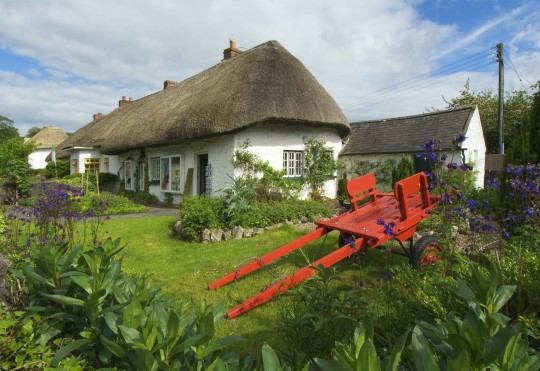


Adare - Co. Limerick
Adare is a picturesque village full of lovely thatched cottages, cafes, restaurants and shops as well as lots of amazing things to keeps you busy if shops aren't your thing.
Founded in the 13th century Adare is a designated heritage town. What you see now though is largely 19th century.
Desmond castle was built in the early 13th century. During the turbulent years that followed it became a strategic fortress. It was owned by the Earl's of Kildare for almost 300 years until the rebellion in 1536 when it was forfeited and granted to the Earl's of Desmond, hence the name. It can be now be seen by tours only, you can see the ruin in the third picture.
Knockfierna, while not actually in Adare itself is close enough you could visit both in one day.
You can see knockfierna in the 4th picture. In English it translates to hill of the fairies. Knockfierna is a beautiful scenic hike, once at the top you can see beyond county Limerick to the counties Clare, Tipperary, Cork and Kerry. The area is steeped with history, from pagan time through to the famine cottages scattered across the hill. The hill which, interesting fact, is also the cone of an extinct volcano, who knew. There are many paths from easy stroll to challenging hike so it caters for most.
I myself will be going to Adare at some time over the next few weeks for a day out, so I shall try my best to remember to take some pictures and post on here.
If you have seen this but not any of my others I have posted a few other places and I'm doing a historical Ireland kind of thing so if you interested have a look. Once I have done Ireland I will be doing England so if your interested in that follow me 👍
1 note
·
View note
Text
Reposting from my personal blog
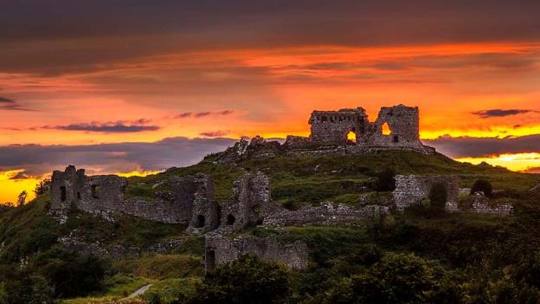

The rock of Dunamase - Co. Laois
The rock of Dunamase is the ruin of a castle originally built some time between 1100 and 1170.
There was originally though an early Christian settlement that was pillaged by the Vikings in 842.
Dunamase was important to the anglo-Normans and so it was used as dowry for the marriage of Aoife, the daughter of Diarmuid Mac Murrough, the king of Leinster and the man she would marry the Norman conqueror, Strongbow.
It passed down through this family before being passed on to another through marriage.
It was taken by the crown in 1330 and given to the O'Moore's who appear to have abandoned it.
Local tales state that cromwellian troops blew up Dunamase in 1651 and while there are no records of this it would explain the state of the castle today.
In 1795 Sir John Parnell attempted to turn the ruins into a residence and banqueting hall. All of the medieval features seen in the ruins were brought from other buildings and added here at this time. When he passed away his son let the place fall in to ruin.
Today the rock of Dunamase is owned by the state and is free to visit. It isn't the an easy climb so if you are interested make sure you have the right shoes.
There is an extremely interesting app called TimeTour where you can explore the rock of Dunamase as it looks now as it would look when it was built and as it would look when lived in.
If you are ever around county laois (pronounced leash as in dog leash) I'd recommend stopping there. It is a good place to visit and would take only half and hour to an hour depending so it is good if you have a few place to see in a day or if you make a detour on your journey.
4 notes
·
View notes
Text
Reposting this from my personal blog
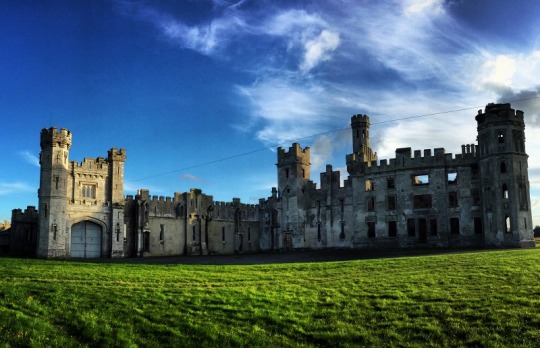
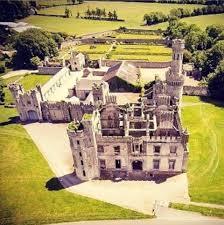


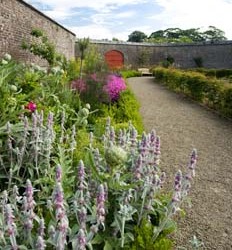
Ducketts grove - Co. Carlow
Built in 1830 Ducketts grove was at the centre of the 12,000 acre estate belonging to the duckett family. Designed by the architect Thomas A Cobdon, he used many gothic designs such as turrets and towers of different shapes, these such designs give Ducketts grove a fairy tale feel through out.
Ducketts grove passed down the family until 1908, when the last male heir passed away, he left it to his wife, Marie Duckett. In 1916 Marie moved to Dublin, leaving the house in the care of a trustee committee. This is where things get slightly mixed up, some story's say bits of land was sold of up till 1923 when Marie sold the remaining land, buildings and all contents to pay of a loan. Other stories say that due to the trustees inability to agree on important matters and constant arguments they ended up making a large amount of debt. Due to this the bank of Ireland took possession of the house as well as all 12,000 acres of land.
What ever it was, all we know is that by 1923 the house was no longer owned by the Duckett family.
For 70 years the house was empty, though in 1933 there was a terrible fire that gutted the building, leaving it as you see it today.
In 2005, the carlow county council began a project to restore the walled garden, in 2007 the first part of the walled garden was opened.
Ducketts grove is free to visit and though it can be a little tricky to find, don't let that stop you from going.
I went to Duckett grove while on a day trip. On that day I also went to two other places that I will post about, called Huntington castle and Brownshill dolmen.
If you like seeing historical places in Ireland, like learning a bit about Irish history or like Irish tourism, follow me so that you can see each time I post a new place.
I have posted a few places already so go have a look.
1 note
·
View note
Text
These are my posts on my first and personal blog so I'm reposting them here, you can go and check out that blog if you feeln like it 👍


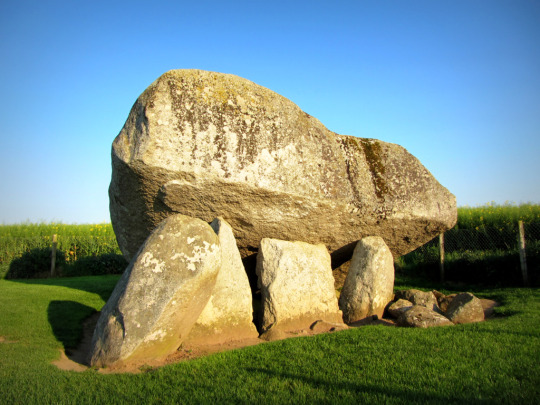
Brownshill dolmen - Co. Carlow
Brownshill dolmen is a type of tomb from megalithic times, between 3000 BC and 2000 BC. Dolmen or portal tomb as it is also known as, is a very distinctive type of tomb. It is when an extremely large stone, known as capstone, would be placed on top of standing stones at an angle, as you can see in the pictures.
What you can't see in the pictures, is what it originally would have looked like. Once the stones were in place, the tomb would have been completely covered in soil except for the area either side of the capstone, you can see in the second picture where the opening would have been. This is where the name comes from.
There are around 180 portal tombs in Ireland in all states of repair.
Archaeologists still do not know how they were able to manoeuvre the capstone into place and for them to stay there this many years later.
Brownshill dolmen has the largest capstone in ireland it is estimated at over 120 tons. From the road it doesn't look much. You could drive past it easily and not realise what you are missing out on. You can walk the whole way up to it an stand next to, in it and walk all around it. You can do all of it for free. It is a good place to stop at if you happen to be going somewhere near it or if you are having a day trip in carlow it is good to add that onto your list.
8 notes
·
View notes
Text
Kinnity Castle
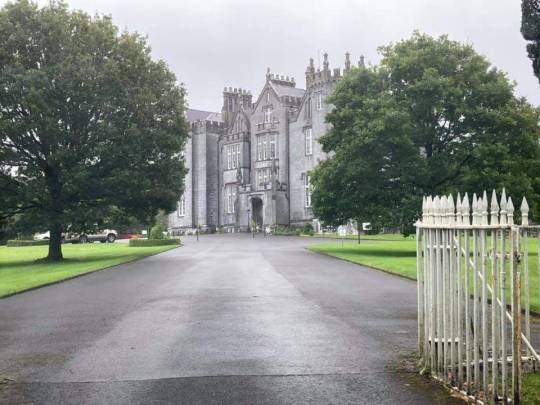
This gothic revival castle is found at the base of the beautiful slieve bloom mountains in county Offaly.
Before the castle you see now was built, there was a previous one standing there. The first castle was destroyed by the normans in 1209 and proceeded to be rebuilt in 1213.
In 1630 a man named william O'carroll built a new castle. This castle was confiscated by the crown in 1641 as part of the plantation of Offaly or kings county as it was known at that time.
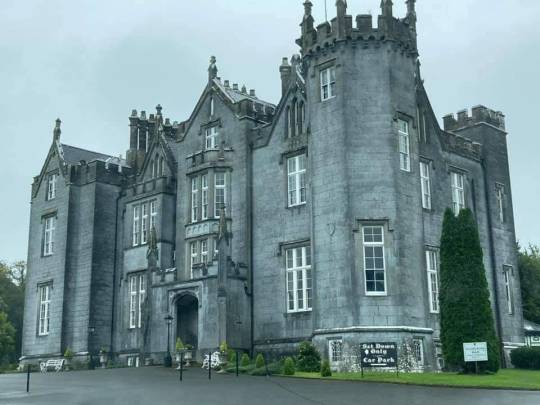
In 1664 the crown granted the estate to col.
Thomas winter in return for him military service. His descendants sold the castle to thomas bernard who renamed the castle as castle bernard. He went on to leave the castle to his son also called thomas bernard.
In 1811 last catherine hutchinson wife of thomas bernard jr commissioned an architect called James pain to extend the gothic castle to it's size you see now.
Thomas bernard left the castle to his son col. Thomas bernard. He died unmarried though and everything was left to his niece's husband.
In 1922 that castle, like many other castles and stately home, was burned by the Irish Republican army. In 1928 the castle was restored and the bernard family continued to live there until 1946. They sold it to Lord decies who went to sell it to the state in 1955.
In 1994 it was bought by a family from limerick who turned it into a 37 room, 4 star, luxury hotel and wedding venue. In 2015 it was bought by it's present owners. The hotel has gone under extensive renovations. It's is known as Kinnity Castle hotel. You can go there to just eat dinner or lunch or have afternoon tea. There is the dungeon bar, the library bar and the slí dala restaurant. Something to cater for everyone.
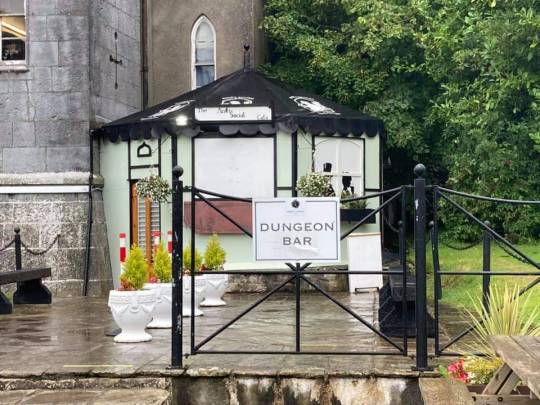
It has a nice area to walk around after a meal, now with extra things to look at, especially for children.

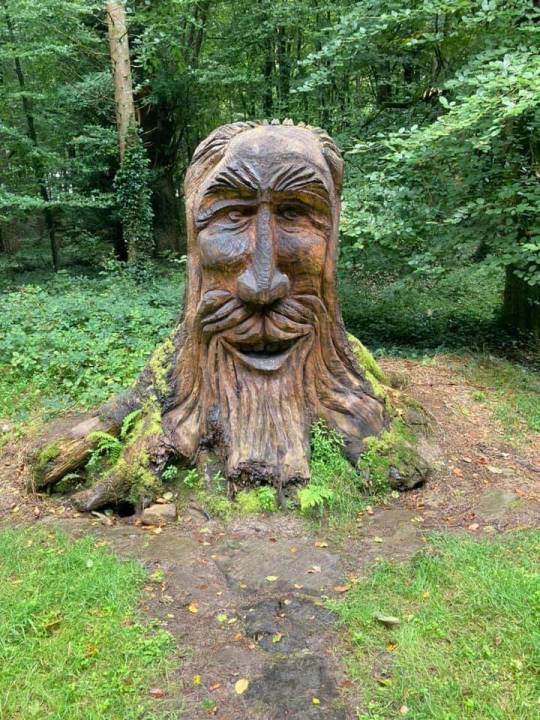


I myself have eaten a Kinnity Castle a few times, for both a main meal and for afternoon tea. The food was delicious and I wold definitely recommend it. My parents have also stayed for the night in the castle and found the room amazing and the staff were excellent.
A word of warning though if you are thinking of visiting, Kinnity Castle is supposed be a extremely haunted castle, especially one of the room. So haunted in fact they have had people running from that room in the middle of the night due to the ghost.
If you are into ghosts and haunted places though, Kinnity is extremely close to the most haunted castle in Ireland. I would guess it to be less then 10 minutes away by car. I will be posting about that place soon.
I hope you have enjoyed. Please follow me. If you have anywhere you would like me to talk about write it in the comments and I will get round to it.
0 notes